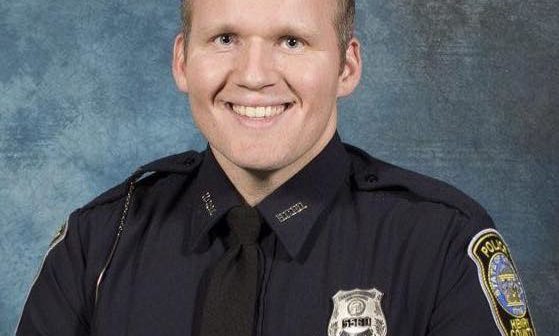When you look at the list of 148 police officers killed in the line of duty last year there is always a No. 1, and of course a there is always a last one.
On December 6, 2018, in Georgia, Henry County Police Officer Michael Smith was shot in the head while struggling with a combative suspect. Three weeks later to the day, on December 30, 2018, Smith died of complications from his injuries. He was the last police officer to die in the line of duty in 2018.
The circumstances of Smith’s shooting and subsequent passing should be a lesson for the those who are quick to criticize the use of deadly force when it involves “unarmed” suspects. The man who shot and killed this young officer who had a wife and a three-year-old son was unarmed.
Smith responded to a call of an irate man creating a disturbance at a dental office. He arrived at the office shortly after 8 a.m. Despite attempts to calm him, the man was uncooperative and became combative. Smith deployed his Taser multiple times with apparently no effect. The struggle between the suspect and Smith lasted just minutes and ended with them fighting over Smith’s service weapon. A shot was fired, and the single bullet struck both Smith and the suspect. The suspect died immediately. Smith survived for six weeks before passing.
From news accounts, Smith appears to have done everything the public expects an officer to do. In this case, it wasn’t enough. The “unarmed” disturbed suspect was able to overcome the officer’s attempts to bring him under control.
When a police officer is attacked by an “unarmed” suspect there is always a chance of losing that fight and being seriously injured or killed. It’s hard to fathom the mindset of anyone who would attempt to attack a uniformed police officer. We could probably all agree that anyone who physically attacks a police officer should not only be considered unbalanced, but dangerous.
This kind of a struggle is no longer about putting handcuffs on someone who doesn’t want them. Rather, this is about surviving an attacker intent on doing you harm.
In a perfect world, any police officer would have sufficient training to utilize a few quick arrest and control techniques and overcome even the most violent of persons, then safely take them into custody. In the real world, there is no quick and easy way to physically engage a suspect who is intent on doing you harm. The attack must be overcome with overwhelming force. Taser, batons, hands, feet, fists are all fair game, but there comes a certain point when it’s not about putting someone in handcuffs, it’s about staying alive.
The decision to use deadly force seems obvious when it’s someone with a gun, a knife, or a club attacking a police officer. The decisionmaking gets a little fuzzier to some when the suspect is “unarmed.” For the officer who is in the middle of a knockdown, drag out fight for their life the decision has to be made in fractions of a second.
In the middle of a bare knuckle fight it takes just one punch to the jaw and you’re out. It takes one quick jerk on your holster and you’ve lost your weapon. For the officer in the middle of this donnybrook it’s about surviving to give their child one more goodnight kiss.
If the suspect in this case had been shot and killed, how many headlines would have read, “Police shoot and kill mentally disturbed man.”
How long before the family of the suspect would hold a news conference with their attorney condemning the unnecessary shooting of their loved one? Some people want to believe it is never okay to shoot an unarmed person.
In a world in which every decision an officer makes when using deadly force will be scrutinized, it must be understood that when you bring a gun to fistfight, if you lose that fight, you could die.
Joe Vargas is a retired police captain.
 Behind the Badge
Behind the Badge



